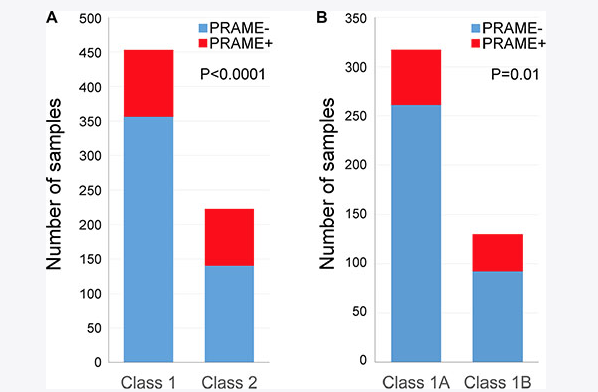Dr. Matthew G. Field discusses his 2016 study published by Oncotarget, entitled: “Epigenetic reprogramming and aberrant expression of PRAME are associated with increased metastatic risk in Class 1 and Class 2 uveal melanomas.”

Behind the Study is a series of transcribed videos from researchers elaborating on their recent oncology-focused studies published by Oncotarget. A new Behind the Study is released each Monday. Visit the Oncotarget YouTube channel for more insights from outstanding authors.
—
Dr. Matthew G. Field
Current Resident Physician, Ophthalmology, University of Iowa
Hi, I’m here to discuss our article that was recently published in Oncotarget this fall, which was titled, “Epigenetic reprogramming and aberrant expression of PRAME are associated with increased metastatic risk in class 1 and class 2 uveal melanomas.” My name is Matthew Field and I’m MD Ph.D candidate at the University of Miami and first author on this paper. This work was conducted in Dr. Harbour’s laboratory. He is an ocular oncologist at the University of Miami. This was also done in collaboration with Castle Biosciences.
First, just to give a little bit of an introduction on uveal melanoma. Uveal melanoma is the most common primary tumor of the eye, and second most common type of melanoma. There’s approximately 2,000 cases per year in the United States. About 50% of patients that get uveal melanoma develop metastatic disease. One of the questions Dr. Harbour asks was whether he could use a molecular assay to determine which uveal melanomas were at lower or increased risk of metastasis.
He found that using a panel of genes, you could delineate low-risk uveal melanomas from high-risk melanomas. The low-risk uveal melanomas were classified as class 1 and the high metastatic risk uveal melanomas were reclassified as class 2. This gene expression profile test is used throughout the United States and many other locations. We have now found recently that though most of the patients that metastasize are class 2, a small proportion of class 1 patients also metastasized. We previously published an article showing that these class 1 patients that metastasized had increased mRNA expression in a gene called PRAME, preferentially expressed antigen in melanoma. Since that initial manuscript, we then further evaluated PRAME in a much larger cohort of patients. We also looked at PRAME expression of both class 1 and class 2 and that was a large part about what this manuscript by Oncotarget was about.

As part of this, we worked with Castle to get PRAME expression data in a large cohort of patients. In 678 samples, we looked at PRAME expression: 498 were PRAME negative and 180 were PRAME positive. We then looked at both class 1 and class 2s and PRAME positivity was associated with shorter time to metastasis and melanoma-specific mortality in both class 1s and class 2s. This was very interesting to us because it allowed us for the first time in class 1s to provide prognostic information for patients that might metastasize out of the class 1s. Most class 1 patients do not metastasize, but the small percentage that do were very associated with high PRAME expression. Then in class 2 patients, even though most class 2 patients metastasized, if you had PRAME positivity, they tended to do even worse. We looked at 12 different CpG sites within the PRAME promoter and all 12 of these CpG sites had hypomethylation in PRAME positive tumors compared to the PRAME negative tumors.
This suggested that the way that PRAME became overexpressed or increased in expression was that the promoter region, which is typically hypermethylated, became hypomethylated and that allowed PRAME to be increased in expression. We then looked at PRAME expression in many different tissues. Interestingly, PRAME is really only expressed in the testes. The fact that there are almost no tissues that are expressing PRAME in the body would suggest that perhaps an immunotherapeutic trial against PRAME would not have that many off-target effects. We would love to collaborate and try to initiate a clinical trial or start something where we could give uveal melanoma patients that have PRAME positivity an opportunity to enroll and see if therapeutic targets against PRAME might have an effect.
To take our findings further on PRAME, we’ve now established cohort two to both retrospectively and prospectively assess PRAME status in a large cohort of patients. Cohort two encompasses approximately 30 centers and many different ocular oncologists. We are going to correlate PRAME expression with outcomes in these patients and follow many patients prospectively to see whether PRAME is predictive of worse disease and worse outcome. So we’re very excited about our results and it’s an exciting time. Potentially, we had found a new target that could be used in immunotherapies and also for prognostic purposes.
Thank you very much and please contact me if you have any questions.
Click here to read the full study published by Oncotarget.
—
Oncotarget is a unique platform designed to house scientific studies in a journal format that is available for anyone to read—without a paywall making access more difficult. This means information that has the potential to benefit our societies from the inside out can be shared with friends, neighbors, colleagues, and other researchers, far and wide.
For media inquiries, please contact media@impactjournals.com.



